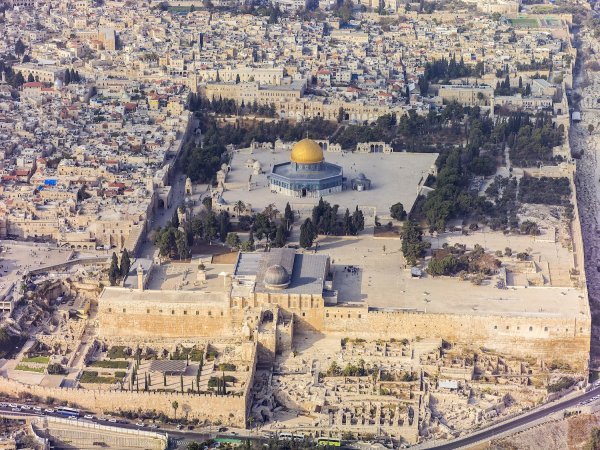At the heart of Jerusalem, Palestine, lies the Al-Aqsa Mosque, a revered place for Muslims worldwide. It's one of the largest mosques globally and holds significant religious importance as one of the three mosques Muslims aim to visit. It marks the first Qibla in Islam. Nestled within the Old City, it's encircled by walls and encompasses various sites, including the Dome of the Rock, the Qibli Mosque, the Marwani Prayer Hall, the Mercy Gate Prayer Hall, and over 200 other landmarks. Spanning about 144,000 square meters, this mosque sits atop Moriah Hill, with the Rock being its highest point, at the heart of it all.
The Quran mentions the Al-Aqsa Mosque: 'Exalted is He who took His Servant by night from al-Masjid al-Haram to al-Masjid al-Aqsa, whose surroundings We have blessed, to show him of Our signs. Indeed, He is the Hearing, the Seeing.' (Quran 17:1)
Al Aqsa’s name Origins
The name 'Al-Aqsa' signifies ‘the furthest mosque’, a name chosen for its distance from Masjid al-Haram and revered for visitation. In Islamic belief, it was named by Allah in the Quran. Over time, its name evolved to describe its distant location rather than preferring it. While some variations exist in the name's original form, it generally referred to the mosque's farthest point.
The Al-Aqsa Mosque encompasses various names, each carrying significance. 'Al-Muqaddas' denotes blessedness and purity, acknowledged by Muslim scholars and poets alike. It's often quoted in their verses, reflecting its sanctity. Similarly, 'Al-Masjid al-Haram' refers to the blessed house, recognized before it was termed 'Al-Aqsa Mosque' in the Quran. This name is prominent in narrations attributed to Prophet Muhammad, like his mention of the Holy Place during the night of Isra and Mi'raj.
Erroneous Beliefs about the Boundaries of Al-Aqsa Mosque Due to Occupation
There's a common misconception that the Al-Aqsa Mosque is limited to the prayer area constructed near the Dome of the Rock, where men currently offer prayers. This misunderstanding stems from attempts by occupying forces to control or dismantle parts of Al-Aqsa. In reality, the Al-Aqsa Mosque encompasses all structures within its walls, including vast courtyards, various prayer halls, walkways, gardens, fountains, and more. This consensus among scholars and historians confirms that prayers offered anywhere within its walls multiply their spiritual rewards. The mosque, except for specific sections, remains uncovered, fostering a profound spiritual connection. Its area spans roughly 144,000 square meters.






Share your opinion